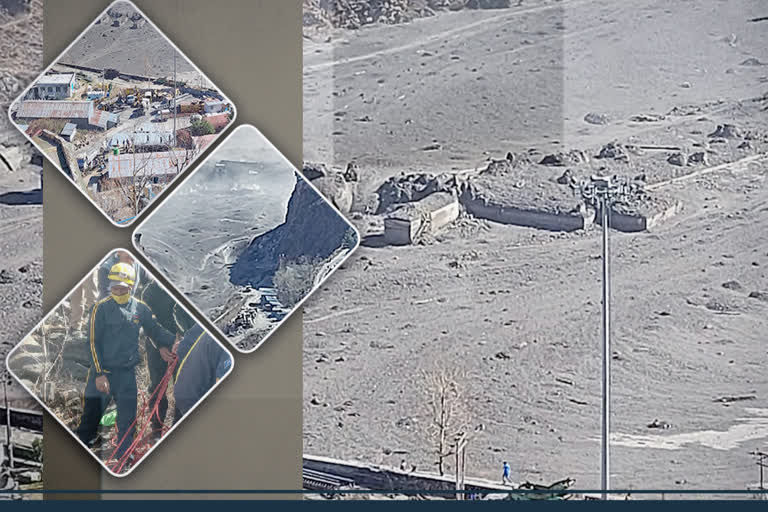New Delhi: While not much is clear as to what led to the devastating flash floods in Chamoli district on Sunday morning, the abiding mystery is how ice may have slipped from the Nanda Devi glacier in winter when the very low temperatures ensure more cohesiveness of ice.
But legendary mountaineer Captain MS Kohli, who was part of a CIA-Intelligence Bureau (IB)-Special Frontier Force (SFF) team that planted a nuclear device on the Nanda Devi glacier in 1965, holds out another interesting possibility.
“It is quite possible that the lost nuclear device which had a life of 100 years may have led to the incident. I don’t think you can rule it out. The government should fast appoint a committee of senior scientists to explore the possibility of the device hitting the rock-bottom as the nuclear power is still on. Also a search with modern metal detecting instruments should be mounted,” Captain Kohli, now 89, told ETV Bharat on the phone.
In 1964, China tested a nuclear bomb in the western province of Xinjiang that took the western world by surprise as the latter thought China was yet to achieve that level of nuclear technological expertise.
The CIA wanted a listening device near the Nanda Devi peak to detect more Chinese nuclear tests if any. The device was powered by plutonium capsules with a life of about 100 years.
Elaborating on the effort, Captain Kohli says: “In 1965 while taking the device up to 25,000 feet near the Nanda Devi peak, the weather turned bad and there was a blizzard. As further progress was not possible, nor could we drag down the device, we decided to climb down after leaving the device there.”
“A hole was dug in the snow and the device was planted there. We thought we would come back again and take it to the Nanda Devi peak. In 1966, we went to the same very spot near Camp 4 but found the generator missing. The antennae and other parts were there but the main thing—the nuclear powered generator—that was missing. There was panic as the generator carried seven nuclear powered capsules that had half the power of the nuclear bomb that exploded over Hiroshima.”
Also read: Uttarakhand Glacier Burst: 26 bodies recovered so far; rescue operations underway
“We worked very hard for three years to locate the device but in vain. I was posted at Tapovan for three years along with a scientist who tested the waters of the Rishi Ganga river every day for traces of radioactivity.”
“After some years, I was called by the chief of the Atomic Energy Commission (AEC) in Bombay. I told him that the generator with the seven capsules was quite hot and may have dug into the glacier after melting the about 30 metres of snow and may have hit the rock bottom. We agreed that there was no possibility of recovering the device. We thought nothing would happen,” Captain Kohli said.
“But if the device falls to the rock bottom, it will be into the source of the Rishi-Ganga as the river drains the water of the Nanda Devi glacier and three-four peaks facing the Nanda Devi. I know the area well. I was posted at Tapovan for three years from 1966 onwards just to detect the device.”
Raini village is the area that faced large-scale devastation. It is the first village from Tapovan on the way to Nanda Devi. From Raini village, one has to walk for two days along the banks of the Rishi-Ganga to reach the foot of Nanda Devi.
While confirmed details are awaited, the incident originated on the Rishi-Ganga river east and upwards of Raini village.
“When the story became global headlines, the then PM Morarjee Desai summoned me from Sydney, Australia, where I was working with Air India. I presented a 30-page confidential report to the PM and suggested that the device may have sunk in deep,” the mountaineer said.
“The CIA blundered by wanting the device at 25,000 feet near the Nanda Devi peak whereas I had suggested Nanda Kot dome which is about 22,000 feet. But they did not listen to me. Just to test we took another device in 1967 to Khardungla Pass in Ladakh at 18,300 feet and the device worked there by picking up perfect signals from China,” says Captain Kolhi.



